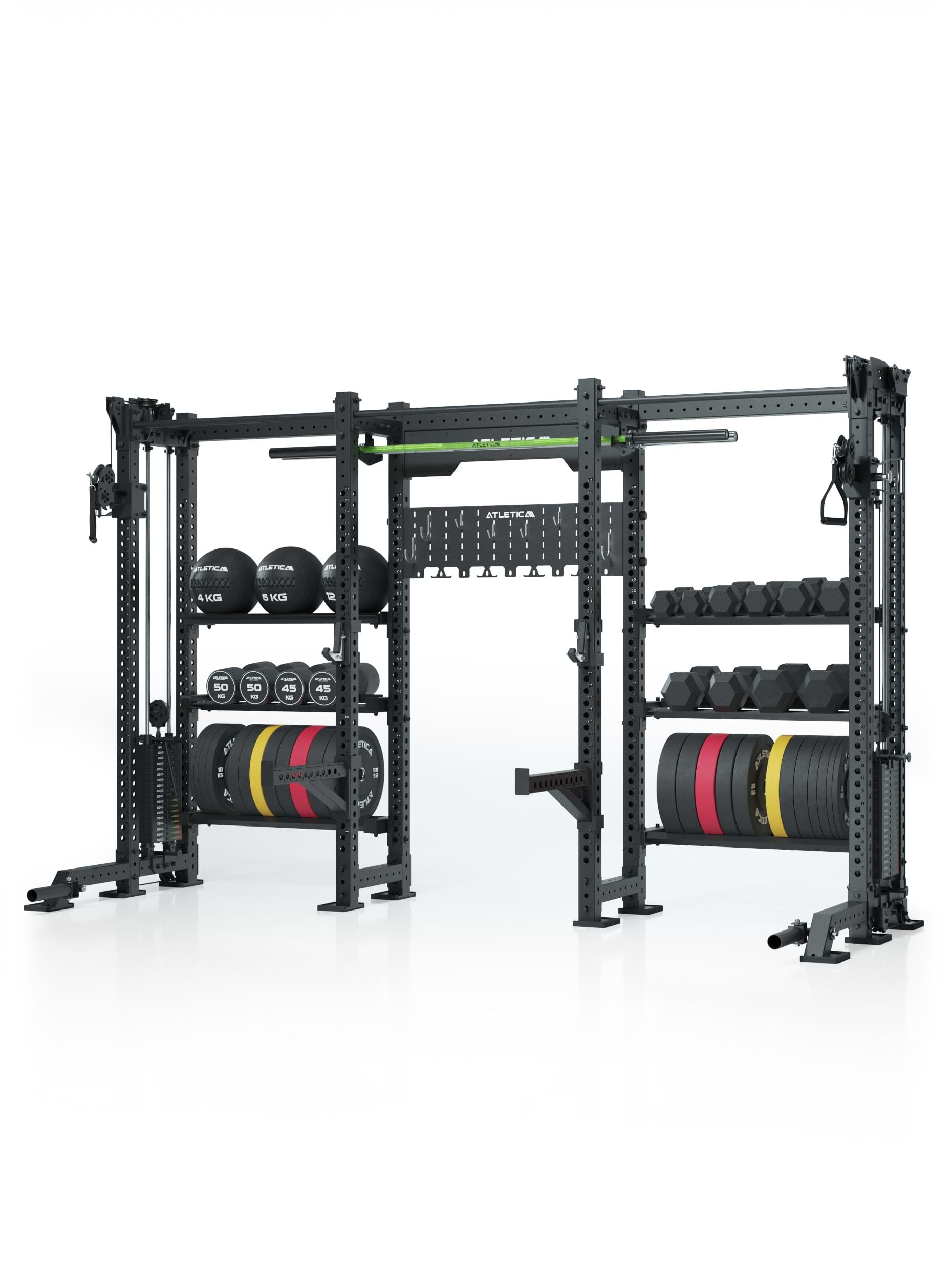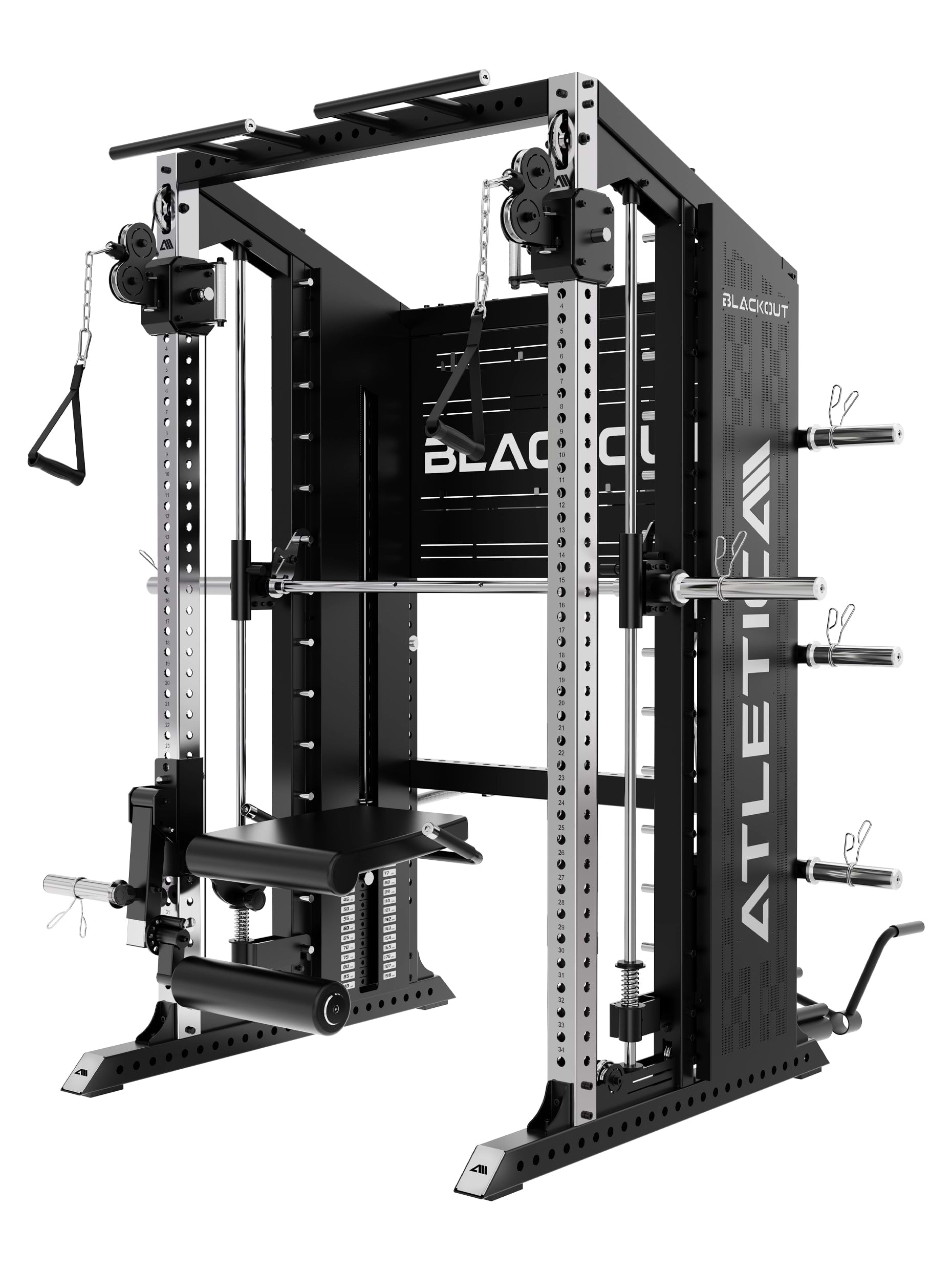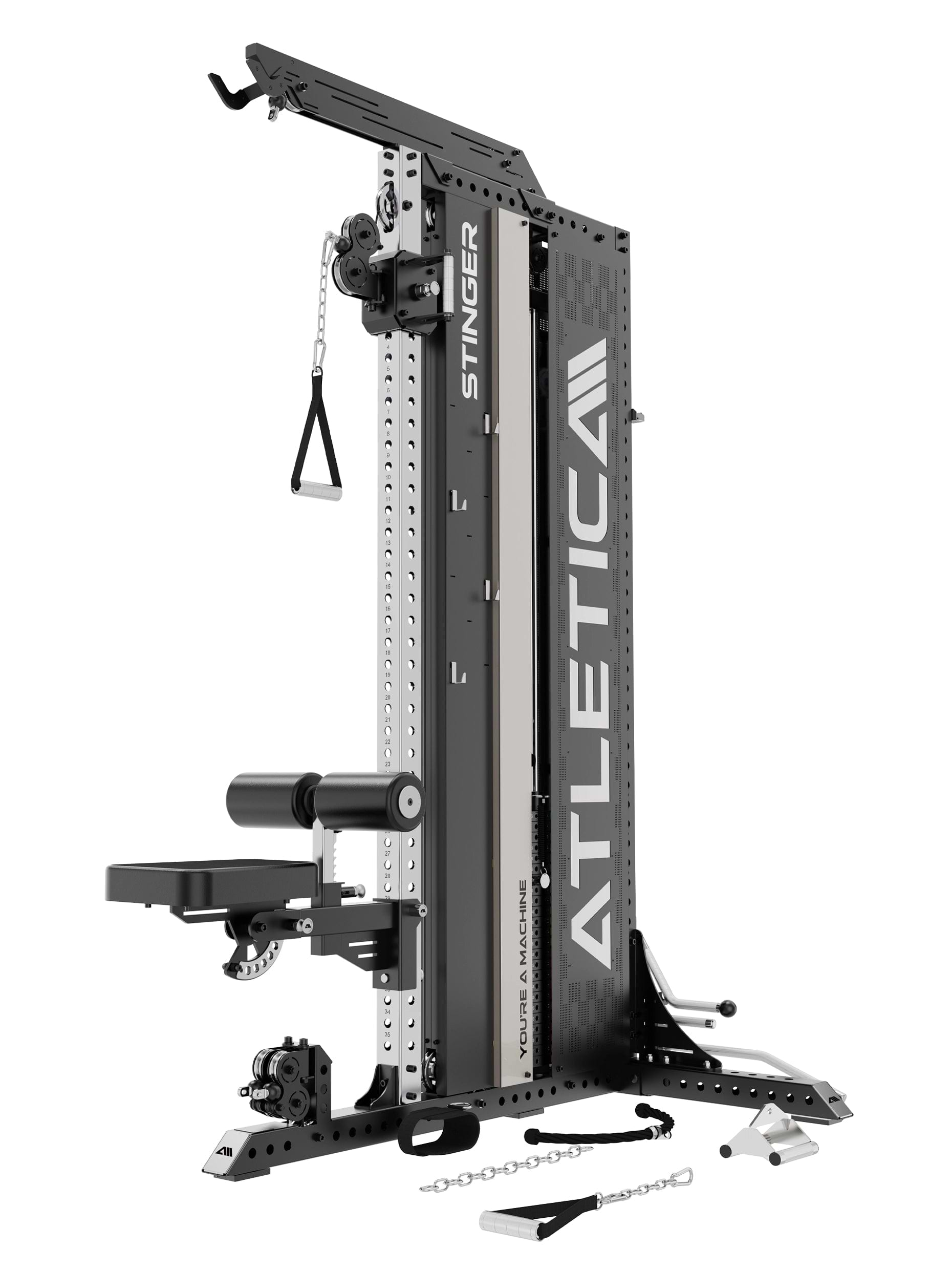Whether you're building muscle, losing fat, or improving your performance – your success depends heavily on how many calories you burn daily. But how do you actually calculate calorie consumption correctly? And why do online calculators often differ so significantly?
In this article, you'll learn how to scientifically calculate your individual calorie consumption, which factors influence it—and how you can increase your daily energy burn with targeted training and high-quality equipment from Atletica .

1. What is calorie consumption anyway?
Your body burns calories around the clock – not only during exercise, but also when you are at rest.
Total sales consist of two components:
1. Basal Metabolic Rate (BMR):
Energy that your body needs at rest for vital functions such as breathing, heartbeat, digestion and cell regeneration.
2. Activity Energy Expenditure:
Energy that you additionally consume through exercise, work and sport.
Formula:
Total metabolism = basal metabolism + performance metabolism
Depending on the activity level, energy expenditure can double the total energy consumption – especially with regular strength training or intensive endurance workouts.
2. Calculate basal metabolic rate (according to the Mifflin-St. Jeor formula)
The Mifflin-St. Jeor formula is considered one of the most reliable methods for estimating basal metabolic rate:
For men:
Basal metabolic rate = (10 × weight in kg) + (6.25 × height in cm) – (5 × age in years) + 5
For women:
Basal metabolic rate = (10 × weight in kg) + (6.25 × height in cm) – (5 × age in years) – 161
Example:
A 35-year-old woman, 170 cm tall, 65 kg:
→ (10×65) + (6.25×170) – (5×35) – 161 = 1,373 kcal/day (basal metabolic rate)
This is the amount of energy her body would use if she were to lie down all day.
3. Calculate energy expenditure (activity factor)
Your energy expenditure depends on how active you are in your daily life and training.
This is calculated using the PAL value (Physical Activity Level) :
|
Activity level |
PAL factor |
Example |
|
Very little (office, hardly any exercise) |
1.2 |
Home office without exercise |
|
Slightly active |
1.4–1.6 |
Occasional exercise, 1–2 workouts/week |
|
Moderately active |
1.6–1.8 |
Regular exercise, 3–5 times a week |
|
Very active |
1.8–2.2 |
Daily training, physical work |
|
Extremely active |
2.2–2.5 |
Professional sport, hard work |

Example continued:
1,373 kcal (basal metabolic rate) × PAL 1.6 = 2,197 kcal total metabolic rate
This is the daily calorie consumption to maintain your current weight.
4. Calorie consumption during exercise – what studies say
Energy consumption during training depends heavily on the type of training, intensity, weight and duration.
Here is a scientifically based overview ( Harvard Medical School, 2023 ):
|
Activity (60 min.) |
60 kg |
80 kg |
100 kg |
|
Strength training (moderate) |
220 kcal |
290 kcal |
360 kcal |
|
High-intensity interval training (HIIT) |
500 kcal |
650 kcal |
800 kcal |
|
Jogging (8 km/h) |
440 kcal |
590 kcal |
740 kcal |
|
Cycling (20 km/h) |
480 kcal |
640 kcal |
800 kcal |
|
rowing machine |
420 kcal |
560 kcal |
700 kcal |
|
Yoga / Mobility |
200 kcal |
260 kcal |
320 kcal |
Atletica Tip:
With a smart treadmill , rowing machine or functional equipment you can specifically increase your calorie consumption – depending on your training goal.
5. Muscle building vs. fat loss: Control calories correctly
muscle building
To build muscle, you need a moderate calorie surplus.
+300–500 kcal above your total expenditure is ideal.
Example:
Total expenditure 2,200 kcal → Target value: 2,500–2,700 kcal
This covers the additional needs for muscle protein building and regeneration.
Fat loss
To lose fat you need a calorie deficit of about 500 kcal/day.
This results in around 0.5 kg of fat loss per week – a sustainable, safe pace.
Atletica Recommendation:
Combine strength training (for muscle maintenance) and cardio (for energy expenditure) – the most effective strategy according to studies ( American Journal of Clinical Nutrition, 2020 ).

6. Increase calorie consumption through strength training
Strength training burns calories not only during but also after training.
This afterburn effect (EPOC = Excess Post-Exercise Oxygen Consumption) can last up to 24 hours.
Scientifically proven:
An intense full-body workout with compound exercises such as squats, bench presses, and rowing increases metabolism by up to 10% for the rest of the day ( Journal of Strength & Conditioning Research, 2016 ).
Most effective exercises according to research:
- Squats (with or without dumbbells)
- Deadlift
- Pull-ups / Lat pull-downs
- rowing
- Push-ups / Dips
Atletica Recommendation:
With a power rack , adjustable weight bench and dumbbell set, this effect can also be perfectly achieved at home.
7. Measuring calorie consumption – which methods are reliable ?
|
method |
accuracy |
Description |
|
Fitness tracker |
Medium |
Practical, but inaccurate for strength training |
|
Smartwatch with heart rate sensor |
Good |
Measures heart rate dependent – ±10% accuracy |
|
Calorie calculator |
Theoretically |
Good basis for entry |
|
Indirect calorimetry (laboratory) |
Very high |
Exact measurement via respiratory gas analysis – clinical |
|
Combination of formula & tracker |
Optimal |
Scientific + practical |
Tip:
Keep a 7-day food and activity diary to see if you are in a surplus or deficit.
8. How to increase your calorie consumption in the long term
- Build more muscle mass: 1 kg of muscle burns about 13 kcal/day at rest.
- Make your everyday life more active: 10,000 steps ≈ 300–400 kcal.
- Incorporate interval training: HIIT increases the afterburn effect.
- Cold-warm alternation: Alternating showers or sauna sessions stimulate metabolism.
- Eat regularly: Fasting periods that are too long can slow down your metabolism.
Atletica Tip:
With Atletica Smart Equipment (e.g. treadmills & rowers with app connection) you can keep a precise eye on your training intensity and calorie consumption.
9. Example calculation: Your calorie consumption on a training day
Person : 30 years, 80 kg, 180 cm, 4x training/week
Basal metabolic rate :
(10×80) + (6.25×180) – (5×30) + 5 = 1,835 kcal
PAL factor (1.7) → 1,835 × 1.7 = 3,120 kcal total consumption
- 45 min strength training (~350 kcal)
→ Total consumption ≈ 3,470 kcal
Goal:
- Muscle building: approx. 3,800 kcal/day
- Fat loss: approx. 3,000 kcal/day

10. Conclusion: Calculate calorie consumption – the basis of your training goal
If you know your calorie consumption, you have control over your body and performance.
Whether you want to lose weight or build muscle, the key is the balance between energy intake and expenditure.
A precise plan helps you make sustainable progress instead of relying on estimates.
With a structured diet, regular training, and the right equipment from Atletica, you can achieve your goal more efficiently than ever before.
Atletica – Quality that moves
From treadmills to rowing machines to power racks :
Atletica offers professional equipment that helps you increase your calorie burn and achieve your fitness goals – precisely, safely, and effectively.
Calculate, train and grow with atletica.de – your partner for performance, quality and progress.































































































